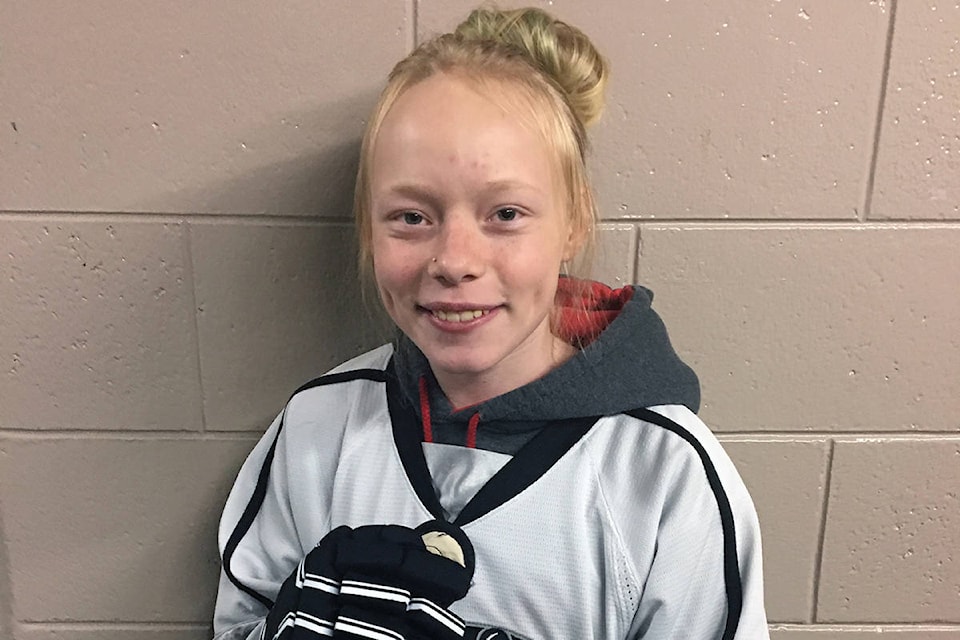Three days a week this girl is way down the road, pursuing her favourite sport – ringette.
Thirteen-year-old Danielle Bacon, a Grade 8 student at Hope Secondary, has been playing the game for six years. She got started when the family lived in West Kelowna, where the commute was just down to the local rink.
Since moving to Hope in 2016, she has been travelling to the Planet Ice rink in North Delta on Wednesday nights and New Westminster’s Moody Park arena on Sundays for practices. Saturday games for the Lower Mainland Thunder U-14s can be anywhere in the Greater Vancouver area.
“We’ve had to go as far as West Vancouver,” said dad Dan.
“There’s ringette up to only U-12 in Chilliwack, so Danielle would have to play for Fraser Valley, which is house league in Langley – but she plays strictly double A.
“About three weeks ago, we played an exhibition game against Thompson-Okanagan at Merritt,” added Dan. “It was our closest road trip of the year.”
Last year, they had a very short commute.
“Lower Mainland rented the Hope rink for two games against Thompson-Okanagan,” said mom Carol. “We’re probably going to do it again this year.”
The made-in-Canada game got started in 1963 in North Bay and Espanola, Ont. It has since spread to the United States, Finland, Sweden, and France – but in Canada, it’s especially popular in the prairie provinces, Ontario, and Quebec.
“B.C. isn’t a hotbed of ringette,” Dan said. “[The Thunder] end up playing the U-16 house teams for scrimmages and they are eight and one so far. We also have four or five tournaments this season. There’s a tournament in Calgary, Jan. 19-21, called the Ring of Fire,” Dan said. “It’s the biggest ringette tournament in Canada, with I believe 190 teams, from bunnies (ages five to seven) right up to U-19.”
The AA Western Canadian championships are in Saskatoon in March, so the Thunder will host playdowns with Thompson-Okanagan and Prince George and the winner will go on to Saskatoon. The Thunder were the B.C. champions last year and they came second of ten teams at the western finals in Winnipeg.
The game is all about getting the rubber ring past the goalie, who uses the same gear as a hockey goalie — with the exception of the face shield, which has a tighter mesh, to prevent the players’ sticks from getting through. Unlike hockey, the skaters’ sticks are bladeless shafts.
Danielle plays forward and shoots left. While the rink and many of the markings are the same as in hockey, there are some key differences.
“There’s a 30-second shot clock that only gets reset if there’s a shot on-goal or the other team gets the ring,” Danielle said.
“And you have to pass the ring over the two blue lines. You can’t carry it over,” Carol added.
Minor infractions give ring possession to the opposing team, rather than going to a faceoff, and there are two- and four-minute penalties.
The goal crease is a no-go zone for everyone but the goalie. Even if the ring is sitting loose in the crease, no tap-ins are allowed. Body-checking or rub-outs are not allowed, nor are downward slashes on the opponent’s stick, which could be a big reason Danielle usually only needs a new stick when she outgrows it.
“You have to go from under the stick and lift it,” said Danielle, who figures it is easier to steal the ring than it is to intercept passes.
To learn more about the sport, visit ringettebc.ca.
